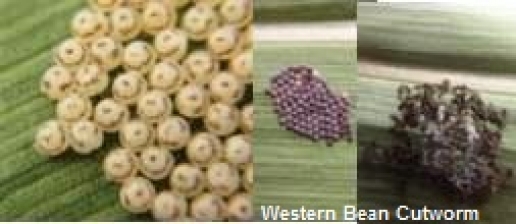January turned the page to the 2014 growing season, and with that comes crop planning. A vital part of the crop plan is managing the fertility plan. Approaches to fertility differ, but are primarily based on replenishing nutrients removed by the crop. Sound fertilizer management begins with regular soil tests. These tests provide the basis…
Category: Agronomy
Northern Corn Leaf Blight

Many fields this past season showed signs of Northern Corn Leaf Blight (NCLB). The lesions of NCLB appear as long elliptical (2-15 cm) grayish-green or tan streaks, usually found on the lower leaves first. As the disease progresses, the lesions will usually merge together forming large blighted regions. In worst cases, the entire leaf will…
Big Roots, Big Yields
If you are curious about how to increase your yield, last week’s SWAC conference provided many learning opportunities. One session that I really enjoyed was Growing Deeper Roots presented by Tom Kilcer. Looking for ways to bust the door wide open to higher yields? Take a read below and see what Kilcer had to say….
Are we there yet? (Black layer)
Corn harvest is just around the corner. Harvest maturity (occurring around 25% grain moisture) usually refers to the point at which harvest and mechanical loss are at a minimum. Before this happens, corn develops a black layer which is located at the base of the kernel opposite to the embryo. Typically this occurs approximately 60…
Estimating Soybean Yields
It is very hard to estimate soybean yield accurately in a field. Soybeans have a great ability to compensate for various growing conditions. Pod number, seeds per pod and seed size all play a role in calculating soybean yield. Pod number: early to midseason stresses can limit how many pods are retained. Seeds per pod:…
A “bouquet” in my corn field?
Multiple ear shoots have been observed on a few hybrids in the past few weeks, which caused some concern among producers. Multiple ears on a single stalk are not uncommon when found on different nodes. This season, some hybrids are showing multiple ears on the same node, known in the industry as “bouquet ears”. Multiple…
Cover Crops after Wheat
Wheat harvest 2013 has come and gone. Red Clover has traditionally been the choice when it comes to a cover crop option in wheat, however, there are many other options out there. It is always a good idea to follow a crop with a cover crop to reduce soil erosion, add organic matter, reduce nutrient…
Is White Mould an issue on your farm?

While travelling over the last couple of weeks, I have been hearing a lot of talk about how nice and tall everyone’s soybeans are this year. Even in hard-hit areas with lots of moisture, most fields are rebounding. In loam soils, soybean plants are getting very tall and some are starting to lodge. The fear…
Insect Invasion – What’s eating my crops?

Standard thresholds for soybean defoliation from bloom to pod fill is 15%. It increases to 25% during pod-fill to maturity (unless pod feeding is occurring). When scouting, be sure to look at leaves from the center of the canopy to get a representative sample. Most often, the feeding looks worse than it is and a…
Soybean Aphids – What should I do?
Soybean aphids have been found in a number of locations in Ontario this year. Aphids were first found in Ontario in 2001. Since then, soybean aphids have been found in varying numbers across the province. Management of this insect has also changed as the industry learns more about its behaviour. Aphid populations are being found…
